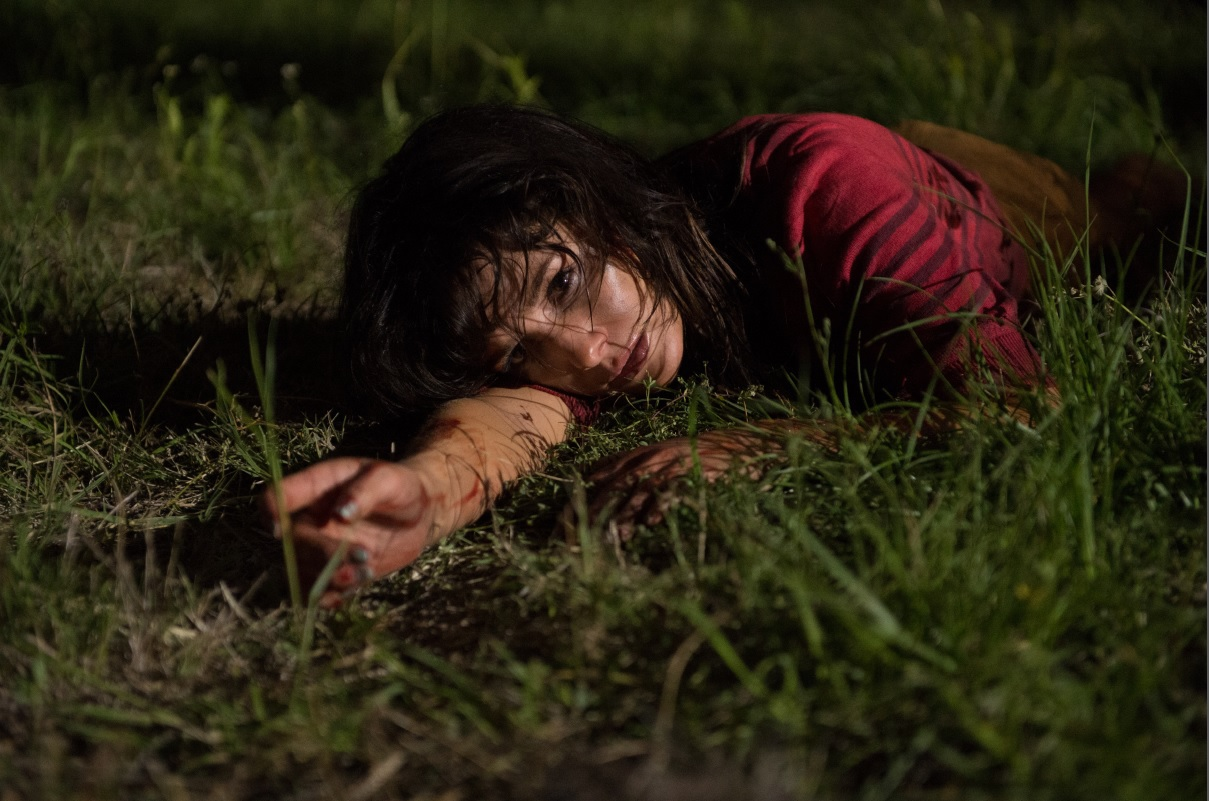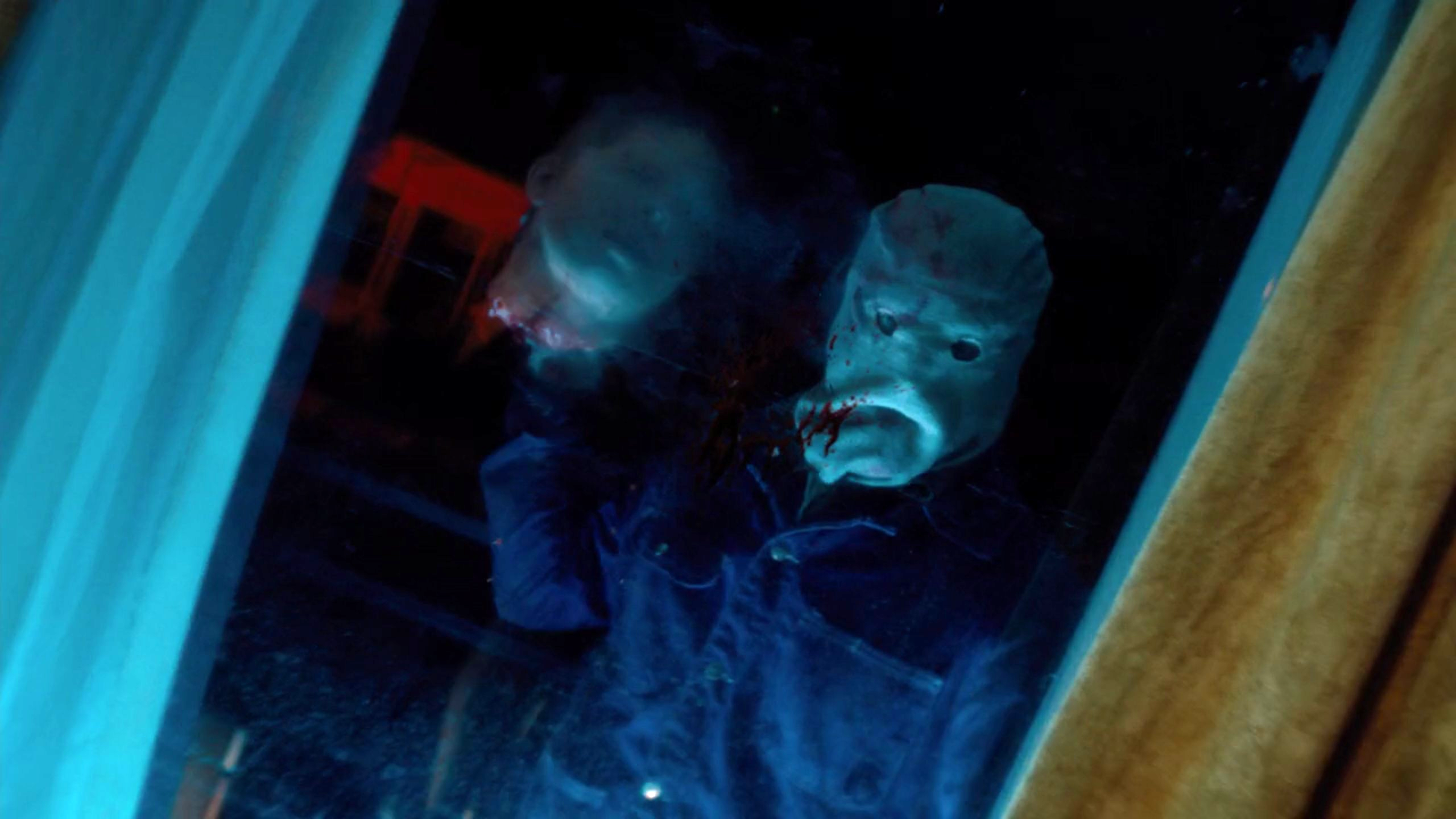This Remake is One of the Century’s Best Meta-Slashers

I’d argue Wes Craven’s Scream remains the most influential horror movie of my lifetime. While the genre has ebbed and flowed—sometimes it’s trauma, sometimes it’s buckets of nihilism—most commercial horror ventures endeavor to capture the same movie magic Ghostface and his gallery of victims did nearly thirty years ago. Notably, where most movies evoke Scream, yet fail in their efforts to be Scream, is recognizability. A riff on Halloween by way of (actually) Kevin Williamson is fun, for example, but still distinctly Halloween. But what about a Scream homage that broadly rejects everything about Scream? Enter Alfonso Gomez-Rejon’s The Town That Dreaded Sundown which turns ten this year.
The Town That Dreaded Sundown is a metafictional sequel to Charles B. Pierce’s cult midnight classic, itself, compellingly, adapted from 1946 Texarkana Moonlight Murders. The murders themselves were a series of violent, unsolved crimes in the Texarkana region in early 1946. The perpetrator, known as either the Phantom of Texarkana or the Phantom Killer, is alleged to have attacked eight people, five fatally, during a ten-week period before, inexplicably, the murders stopped.
That abrupt end to a spree of horrific killings is where Gomez-Rejon’s and producers Jason Blum and Ryan Murphy stage their Sundown revival. Much like another 1970s cult hit (The Texas Chain Saw Massacre), the original film plays fast and loose with reality and true crime origins. As a result, the 2014 remake has a pretty flexible playground within which to work. This The Town That Dreaded Sundown is many things. The opening sequence screams, well, Scream: a movie-within-a-movie, teenage lovebirds who find themselves unknowingly trapped in a sequel.
That opening beat is the most Blumhouse, the most “this is a direct-to-video metafictional sequel to niche cult classic”. Corey Holland (Spencer Treat Clark) and Jami Lerner (Addison Timlin) are attacked in a The Town That Dreaded Sundown homage. Jami, final girl du jour, survives, and the local authorities fear someone linked to the original Phantom Killer intends to restart the Texarkana killings. Of course, the problem there, at least procedurally, is that no one knows who the original killer was.
Alfonso Gomez-Rejon is a filmmaker of talent. While his style, at times, risks the same visual excess innate in most Ryan Murphy projects, there’s a rhythm and commitment to the macabre that immediately sets The Town That Dreaded Sundown apart. Make it past the first ten minutes, and this commercially viable horror sequel becomes anything but. It’s not the most conventional legacy sequel ever made, though, ten years out, I can say it is one of the best.

It should be said that The Town That Dreaded Sundown isn’t a legacy sequel in the strictest sense. There are no returning cast members, though there are plenty of callbacks to the original. At its core, The Town That Dreaded Sundown is a revival that almost demands familiarity with the source material. This isn’t Halloween (2018). While some effort is made to clarify for the unfamiliar, including voiceover narration courtesy of Denis O’Hare, who plays Charles Pierce Jr. in the film, those efforts are purely expository. The feel, the vibe, the rural nightmare of the 1976 film—you need to know them—and be on board—for this new iteration to work.
That’s because, despite the legacy billing, The Town That Dreaded Sundown is a weird movie. A weird, weird movie. Gary Cole and Anthony Anderson play the tentpoles of Texarkana law enforcement, though neither is given much to do. Cole has a bit more oomph during the third act, though Anderson—easily one of the cast’s most recognizable faces—disappears midway through, never to appear again. Neither drives the investigation into the new slate of killings forward, neither finds some crucial piece of information. They’re just… there.
There’s a wildly unwieldy temporal Texas vortex. The Town That Dreaded Sundown opens on Halloween, features some Thanksgiving killings, and wraps its story the day after Christmas. The scale is unconventional, as is the introduction of new, often dimensional characters out of nowhere just to kill them. The film’s two gay victims share an earnest, awkward exchange about oral sex before their deaths. They’re only in the movie to die, though Gomez-Rejon gives them just enough depth to render their deaths meaningful. There’s not a disposable corpse in the bunch.

The standout quirk is The Town That Dreaded Sundown’s conspicuous lack of humor. There’s nary a joke in the entire thing. Scream riffs, by design, should be funny. Even Craven’s own early scream prototype, New Nightmare, was effervescent enough to never get truly scary. The Town That Dreaded Sundown is just grim. The deaths are brutal and quick. Heads are severed and bodies are bisected with glee. It’s a requirement for a 2014 slasher, though it feels more personal, more in-your-face, here than in most legacy sequels.
And Jami. Wow, Jami. Addison Timlin is sensational, though The Town That Dreaded Sundown never lionizes her final girl status. Until the final ten minutes, Jami never even encounters the Phantom after the inciting attack. Her big narrative arc is an effort to discover who the original killer is, though she’s not even successful there. After the second attack, Jami confidently visits the local precinct. She’s got something. Only, she really doesn’t. The police already looked into it. The killer’s identity is discovered by O’Hare’s Charles Pierce Jr., of all people. The climax even occurs as Jami is fleeing Texarkana with her grandmother, Lillian (Veronica Cartwright).
The Town That Dreaded Sundown, like its Texarkana setting, is two competing worlds sharing an unclear boundary. There’s the soft-focus CW teen slasher and the weird, experimental psychodrama. It shouldn’t work, but against all odds, it does. The Town That Dreaded Sundown lands considerably better a decade out than it did upon release. There are, after all, ten years’ worth of legacy sequels to compare it to, movies that never exhibit even an ounce of the brazen rejection of norms The Town That Dreaded Sundown does. It’s not a conventionally entertaining movie, though it remains tenderly, ethereally haunting. Like the real-life murders at its core, that’s about the greatest thing a movie like it could hope to be.
The Town That Dreaded Sundown is streaming now on Prime Video.
Categorized: Editorials News
